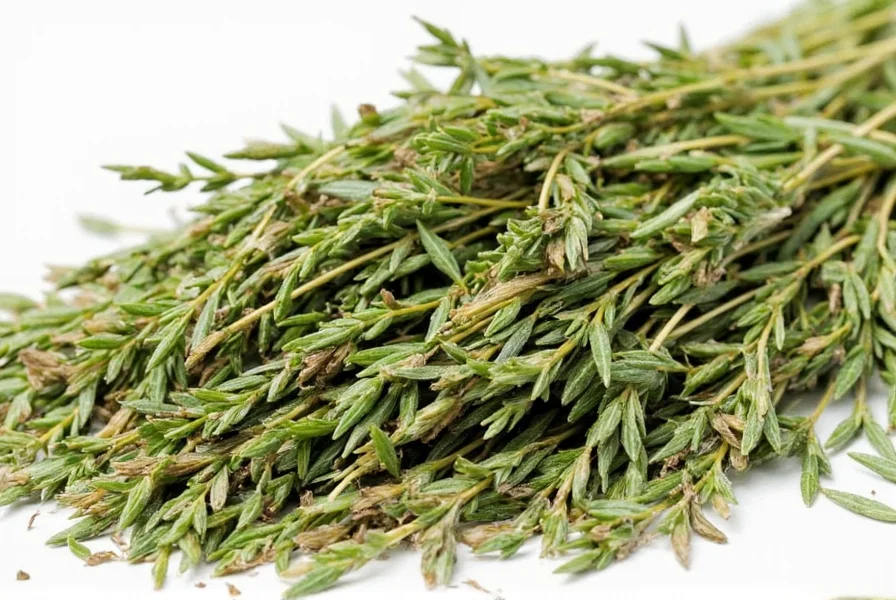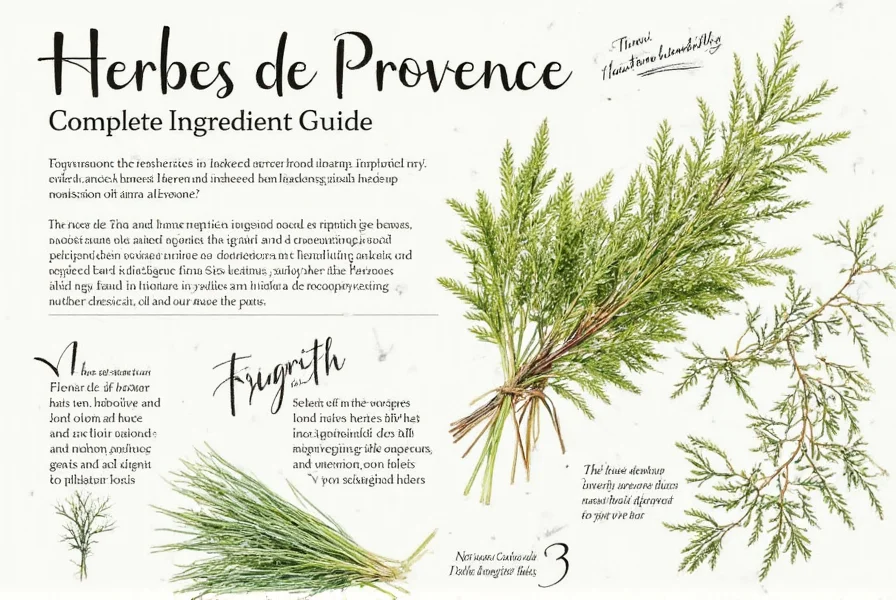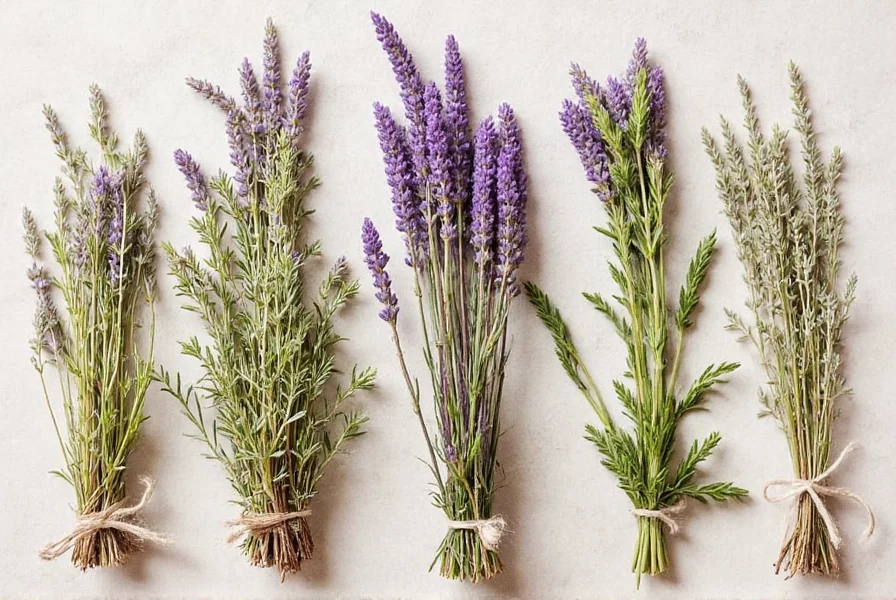When exploring French cuisine, few ingredients capture the essence of Provence like its signature herb blend. Herbes de Provence isn't just a random collection of dried herbs—it's a carefully curated mixture reflecting the aromatic landscape of southern France. This distinctive blend brings the sun-drenched hillsides of Provence directly to your kitchen, offering a complex flavor profile that elevates everything from roasted meats to vegetable dishes.
The Essential Components of Authentic Herbes de Provence
Understanding what's in herbs de provence requires examining both the mandatory and optional ingredients that define this classic French seasoning. The blend's composition has evolved over centuries, shaped by local traditions and available flora.

Core Herbs (Always Included)
Every authentic Herbes de Provence blend contains these four foundational herbs:
- Thyme - Provides earthy, slightly floral notes with subtle mint undertones
- Rosemary - Contributes pine-like aroma and robust flavor
- Oregano - Adds Mediterranean warmth and slight bitterness
- Marjoram - Offers sweet, citrusy complexity that distinguishes it from oregano
Common Variations (Regionally Dependent)
Depending on the specific producer and regional tradition within Provence, you might find these additional ingredients:
| Additional Herb | Flavor Contribution | Regional Prevalence |
|---|---|---|
| Lavender | Floral, slightly sweet notes | Most common in northern Provence |
| Savory | Peppery, thyme-like flavor | Traditional in western Provence |
| Fennel seeds | Sweet licorice notes | Less common, found in coastal blends |
Historical Context of Herbes de Provence Composition
The specific combination of herbs in Herbes de Provence reflects centuries of culinary tradition in southern France. Originally, households would create their own blends using whatever herbs grew locally. The standardized commercial blend we recognize today only emerged in the mid-20th century.
Traditional French cooking resources reveal that authentic herbs de provence ingredients were historically gathered by individual families rather than purchased pre-mixed. This explains why regional variations persist even today. The blend's composition often depended on microclimates within Provence—areas with more rainfall might feature different dominant herbs than drier regions.
Distinguishing Authentic Blends from Commercial Versions
When examining what's included in herbs de provence, be aware that many commercial blends contain additives not found in traditional recipes. Authentic blends contain only dried herbs with no fillers, salt, or anti-caking agents.
Commercial versions sold outside France often include:
- Basil (not traditional in Provence blends)
- Parsley (typically not included)
- Garlic powder (a modern addition)
- Salt (never part of authentic blends)
Understanding the difference between traditional herbs de provence ingredients and commercial adaptations helps ensure you're using the authentic flavor profile in your cooking.
Culinary Applications of Herbes de Provence
The specific herb combination in Herbes de Provence creates a versatile seasoning that works exceptionally well with:
- Roasted chicken and other poultry dishes
- Grilled lamb and beef preparations
- Vegetable tian (layered vegetable casserole)
- Olive oil-based marinades
- Tomato-based sauces
- Bean and lentil dishes
For best results when using herbs de provence ingredients, add the blend early in the cooking process to allow the flavors to fully develop. The herbs' essential oils need time to infuse the dish properly.
Proper Storage of Herbes de Provence
To maintain the vibrant flavor of your herbs de provence blend, proper storage is essential. Store in an airtight container away from light and heat. When stored correctly:
- Freshness lasts 6-12 months
- Color should remain vibrant green
- Aroma should be immediately noticeable when opened
Consider buying smaller quantities more frequently rather than large containers that might lose potency before use. This approach ensures you're always working with optimally flavorful herbs de provence ingredients.
Common Misconceptions About Herbes de Provence
Several myths persist about this classic French herb blend:
- Misconception: All blends contain lavender
Reality: While popular in northern Provence, lavender is absent from many traditional southern blends - Misconception: The blend always includes sage
Reality: Sage is not part of authentic Herbes de Provence - Misconception: The proportions are standardized
Reality: Family recipes vary significantly, with no official ratio
Creating Your Own Authentic Blend
For those interested in making their own version of what's in herbs de provence, follow these guidelines:
- Start with equal parts thyme, rosemary, oregano, and marjoram
- Add lavender sparingly (if using)—no more than 1 part to 8 parts of the base blend
- Include savory for traditional western Provence flavor
- Use only high-quality dried herbs (fresh herbs won't blend properly)
- Store in a dark glass jar to preserve potency

Substituting Herbes de Provence
If you don't have access to authentic herbs de provence ingredients, consider these substitution options:
- For general cooking: Equal parts thyme, rosemary, and oregano
- For poultry dishes: Add extra marjoram to the basic blend
- For Mediterranean vegetable dishes: Include a pinch of lavender
- For lamb preparations: Increase the rosemary proportion
Remember that no substitution perfectly replicates the complex flavor profile of authentic Herbes de Provence, but these alternatives can provide similar aromatic qualities when the genuine blend isn't available.
Frequently Asked Questions
Does traditional Herbes de Provence contain lavender?
Traditional Herbes de Provence blends vary by region. Northern Provence blends often include lavender, while southern versions typically do not. Authentic commercial blends may or may not contain lavender, so checking the ingredient list is essential for determining what's in herbs de provence you've purchased.
What's the difference between Herbes de Provence and Italian seasoning?
Herbes de Provence features thyme, rosemary, oregano, and marjoram as its core, sometimes with lavender. Italian seasoning typically contains basil, oregano, rosemary, thyme, and sometimes sage. The key difference is marjoram (prominent in French blend) versus basil (dominant in Italian blend), creating distinctly different flavor profiles.
Can I substitute dried herbs for fresh when making Herbes de Provence?
Authentic Herbes de Provence is always made with dried herbs. Fresh herbs contain too much moisture and would spoil when blended. The drying process concentrates flavors and creates the characteristic texture of the blend. When using the blend in cooking, the ratio is typically 1 teaspoon dried blend to 1 tablespoon fresh herbs.
Why doesn't my Herbes de Provence taste like restaurant versions?
Restaurant-quality Herbes de Provence often uses higher quality, freshly dried herbs with precise ratios. Many commercial blends contain fillers or incorrect proportions. For authentic flavor, use a blend with just the core herbs (thyme, rosemary, oregano, marjoram) and add lavender sparingly if desired. The quality of individual herbs significantly impacts the final flavor profile.
How can I tell if my Herbes de Provence has gone bad?
Signs that your herbs de provence ingredients have lost potency include faded color (should be vibrant green), weak aroma (should be immediately noticeable), and flat flavor. Properly stored, the blend maintains quality for 6-12 months. If you need to rub the herbs between your fingers to detect any aroma, they've likely lost their optimal flavor and should be replaced.











 浙公网安备
33010002000092号
浙公网安备
33010002000092号 浙B2-20120091-4
浙B2-20120091-4